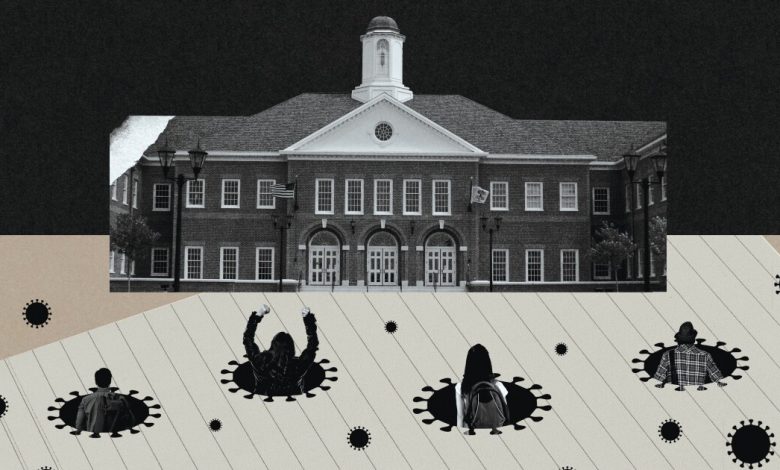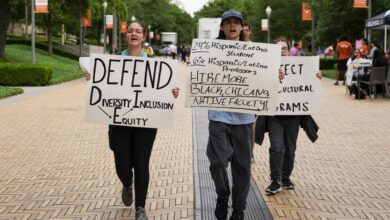For Decades, the Number of Hispanic-Serving Institutions Steadily Rose. Then the Pandemic Hit.

[ad_1]
For the first time in two decades, the number of colleges designated as Hispanic-serving institutions declined in 2020-21, according to a report issued on Thursday by Excelencia in Education and the Hispanic Association of Colleges and Universities. It’s the latest indication of the pandemic’s toll on a demographic many see as key to higher education’s future.
“Latinos were projected, prior to the pandemic, to represent the largest growth in college enrollment,” said Deborah A. Santiago, chief executive officer of Excelencia in Education, a nonprofit founded in 2004 to advance Hispanic-student success. “The decrease in Latino college enrollment has led to this decrease in the number of HSIs” and added urgency to the push for more public investment in those colleges. It also shows, she said in a prepared statement, the need for a more intentional commitment on the part of Hispanic-serving institutions to helping their Hispanic students succeed.
HSI is a federal designation for public or private nonprofit colleges where Hispanic students represent at least 25 percent of the full-time equivalent undergraduate population. Due to changing national demographics and the financial advantages that come with the federal designation, the number of colleges that meet that threshold had been been steadily growing. Colleges that achieve this designation are eligible to compete for certain five-year grants from the U.S. Department of Education, leading critics to question whether their push toward HSI status is sometimes more motivated by money than a specific commitment to Hispanic-student success.
In the 2020-21 academic year, as the pandemic continued to upend the lives of Hispanic students and their families, and squeeze the bottom lines of the colleges they gravitate toward, the number of HSIs slid from 569 to 559. Santiago said the factors included enrollment drops, a small number of college consolidations, and the closing, during the pandemic, of a handful of private colleges in Arizona, California, Puerto Rico, and Utah.
On the other hand, the report noted an increase, from 362 to 393, in the number of what Excelencia calls emerging HSIs — institutions with Hispanic undergraduate enrollments of 15 percent to 24.9 percent. That number continued to rise because of the growing number of Hispanic young people coming up through the K-12 system. Some of the colleges falling out of the HSI status had been just above the 25 percent threshold and fell to just below.
The Excelencia report is based on the most recent publicly available data from the National Center for Education Statistics for academic year 2020-21, the first full academic year into the pandemic.
In 2021, undergraduate enrollment slid across nearly all demographic groups and at every type of college. Hispanic undergraduate enrollment fell 7 percent from 2019 to 2021, according to the National Student Clearinghouse Research Center. That’s particularly concerning because Hispanic people have the lowest lowest degree attainment of any racial or ethnic group in the United States. Hispanic families are less likely to take out loans and were more likely to have lost jobs or suffered other financial setbacks during the pandemic that caused students to second-guess whether college was worth it.
Antonio R. Flores, president of the Hispanic Association of Colleges and Universities, said that what troubles him most about the latest numbers “is that the Hispanic-serving institutions that are now trying to recover remain so severely underfunded. When you look at the higher-education landscape, even among minority-serving institutions, we are the least supported on a per-student basis,” he said, “but we serve the neediest students.”
Excelencia’s analysis also found that:
- HSIs represent fewer than one in five higher-education institutions but enroll two-thirds of Latino undergraduates.
- Forty-six percent of students attending the nation’s HSIs are Latino.
- Community colleges represent 44 percent of HSIs, and public institutions make up 66 percent.
- Most HSIs are in urban areas, with the biggest concentration in California, Texas, and Puerto Rico.
[ad_2]
Source link






